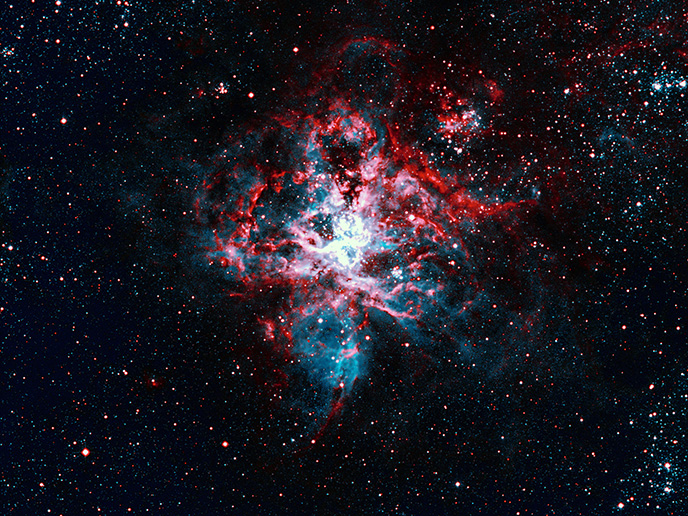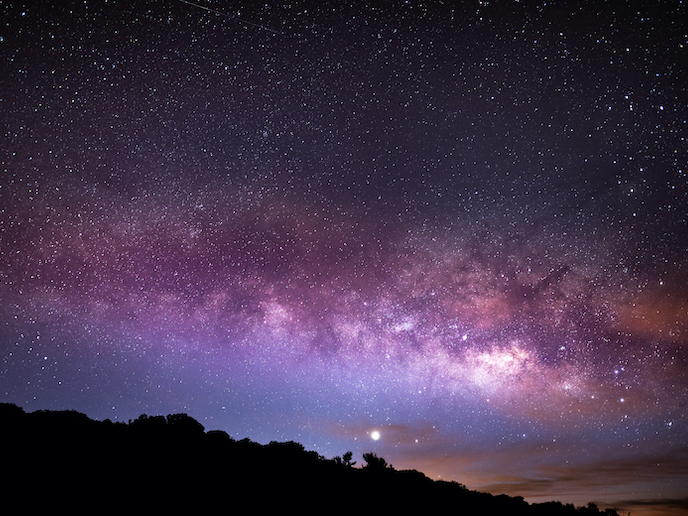EU project lays transparent galaxies bare
For a long time, studying the Universe’s galaxies was all about the observation of the things we could see: stars, planets and other celestial objects. Astrophysicists have long theorised that dark matter exists, and that it accounts for 85 to 90 % of all matter in the universe. But whilst the scientific community hasn’t been able to observe it directly, studying parts of the universe where it was believed to be most prominent – such as low surface brightness (LSB) galaxies – is a great starting point. Apart from their very existence, we still know very little about the almost transparent LSB galaxies. How do they form and evolve? How are they linked to their dark matter haloes? How do they fit within the current cosmological model of galaxy formation? “The detection and modelling of these type of galaxies is extremely demanding from an observational and theoretical point of view,” explains Dr Arianna Di Cintio, a theoretical astrophysicist who coordinates the DIGESTIVO project in collaboration with the observational team led by Dr Ignacio Trujillo. “It is only now, with the advent of new deep surveys, that these objects can finally be explored in large numbers. Likewise, the enormous increase in supercomputing capabilities allows for running extremely high-resolution simulations. These, together with a proper modelling of the feedback mechanisms governing galaxy formation, can help us reproduce LSB galaxies.” DIGESTIVO’s work, which was undertaken with the support of the Marie Skłodowska-Curie programme, is fundamental. The so-called Lambda Cold Dark Matter model – which explains the origins of the cosmos – doesn’t provide enough information to understand the formation of LSB galaxies. As more and more such galaxies are being observed, this poses a growing problem to astrophysicists. “To clear these grey areas, we have been using new observational strategies. We also used extended deep surveys to statistically address the properties of these LSB galaxies and ultra-deep imaging to explore the most promising, faintest targets,” says Dr Trujillo. Amongst the project’s most important outcomes is the understanding of how LSB galaxies form in a cosmological context. “We got there by conducting some of the world’s highest resolution cosmological simulations. We also ran, for the first time, detailed simulations of galaxies able to reproduce the main features of these objects, such as their extreme size and faintness. This all resulted in the finding that LSB galaxies form as a result of coplanar mergers of smaller galaxies and aligned accretion of gas at early times, together with stellar feedback-driven strong outflows of gas from the centre. This makes the central distribution of stars and dark matter very shallow, reproducing the observed dynamics of these objects,” explains Dr Di Cintio. Meanwhile, Dr Trujillo and his team have been exploring a new type of very LSB objects where dark matter was reported not to be present. They undertook a detailed observational analysis of these galaxies and, at the same time, explored cosmological predictions based on these simulations. “We have found that these objects can be understood within the current scenario, provided that the dark matter is distributed very homogeneously in their inner parts with a so-called extended core dark matter halo.” All in all, DIGESTIVO offers invaluable insights into the formation and characteristics of LSB galaxies. It also provides a better picture of mass distribution within galaxies. “The extended cores in dark matter haloes that we found within our simulated LSBs are of great interest for the community. They will help explain an increasing number of observations where the dynamics of LSB galaxies are not easy to understand,” Dr Di Cintio concludes.
Keywords
DIGESTIVO, low surface brightness galaxies, LSB, dark matter







